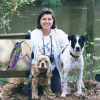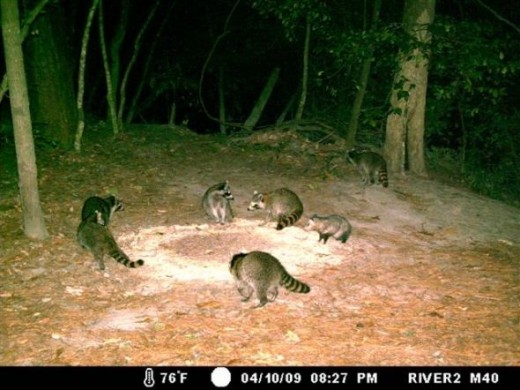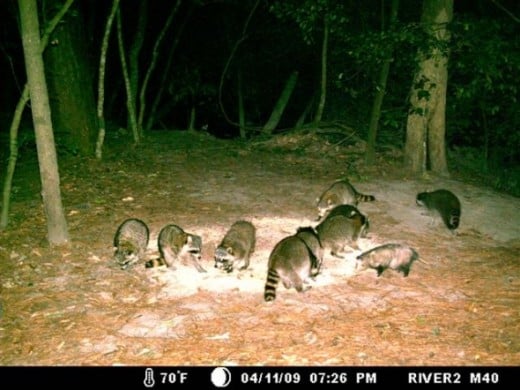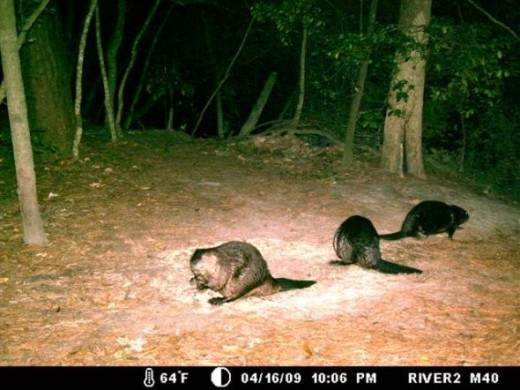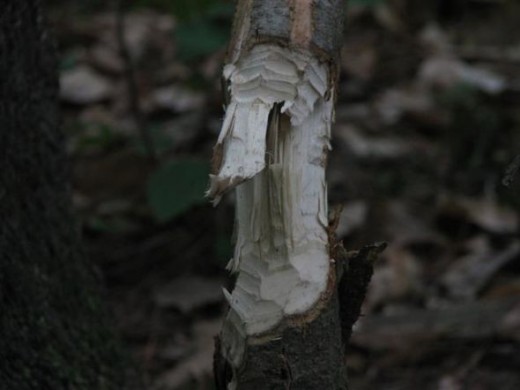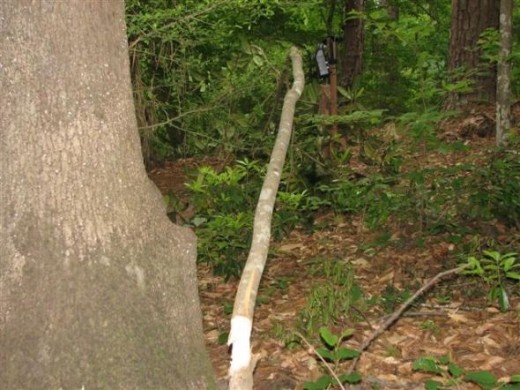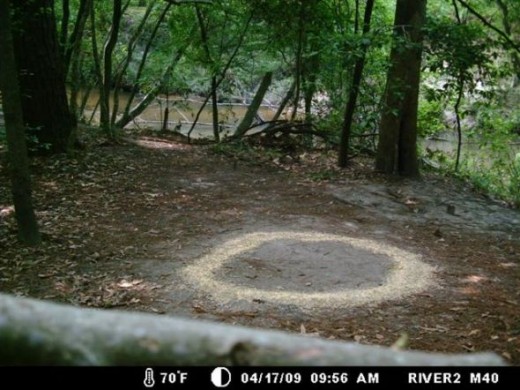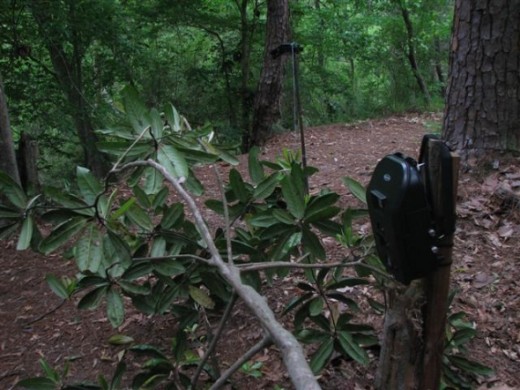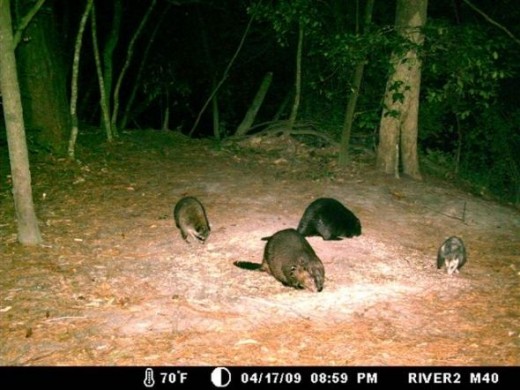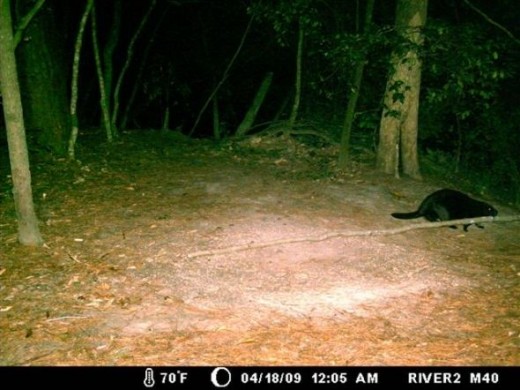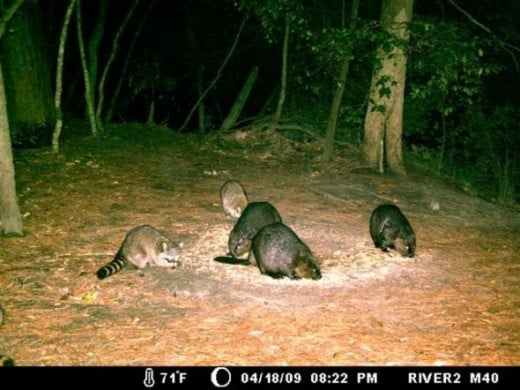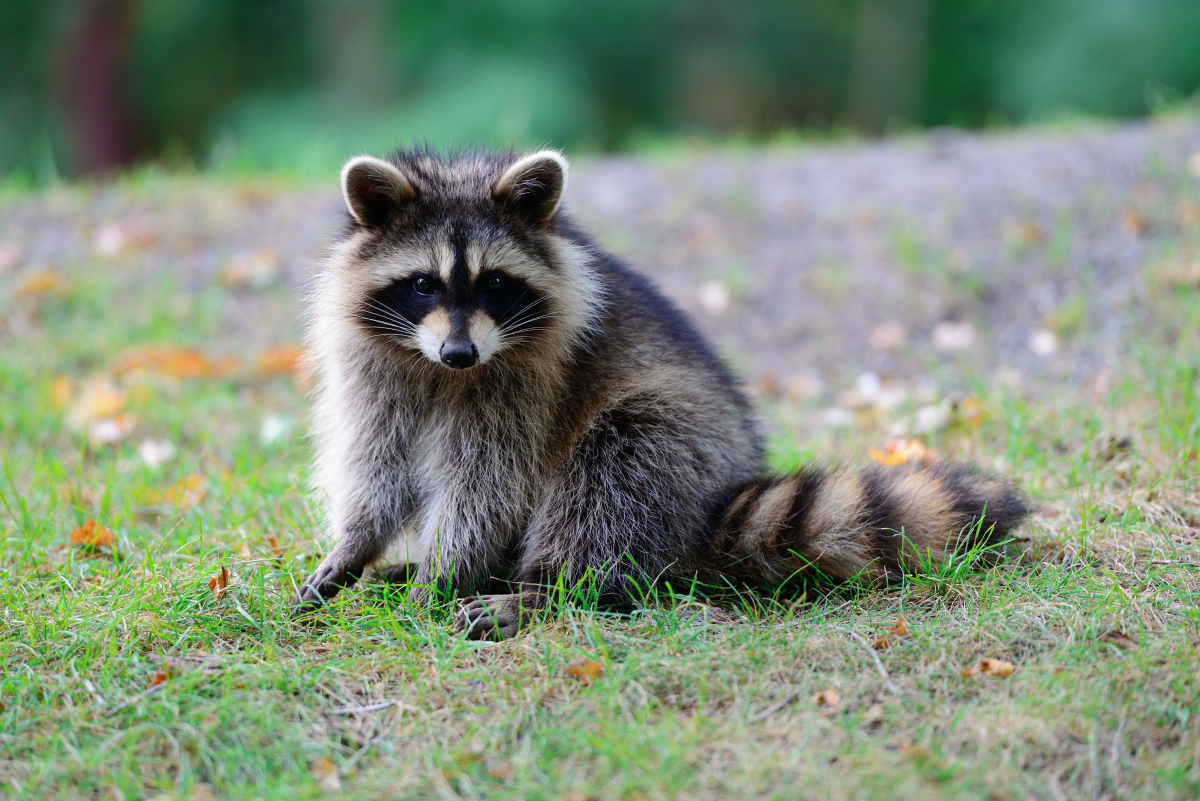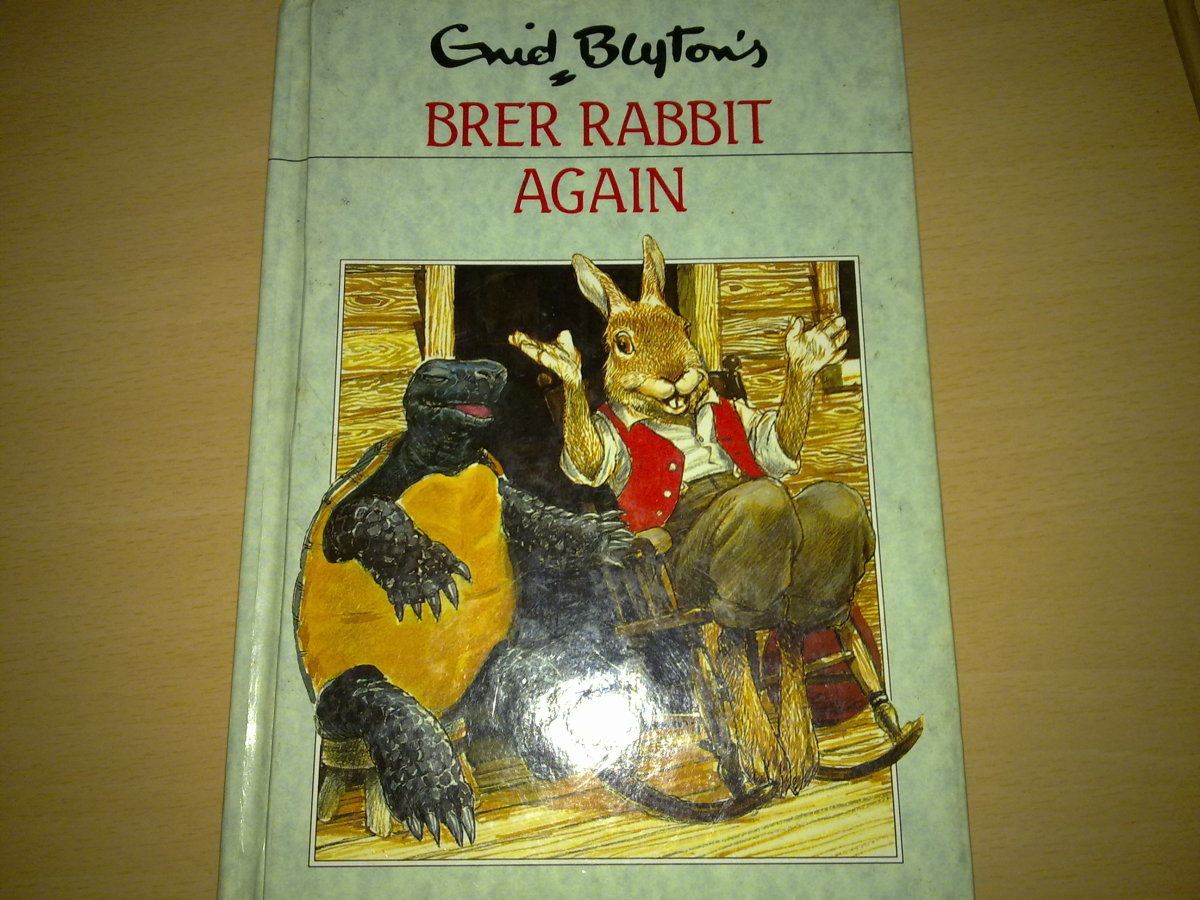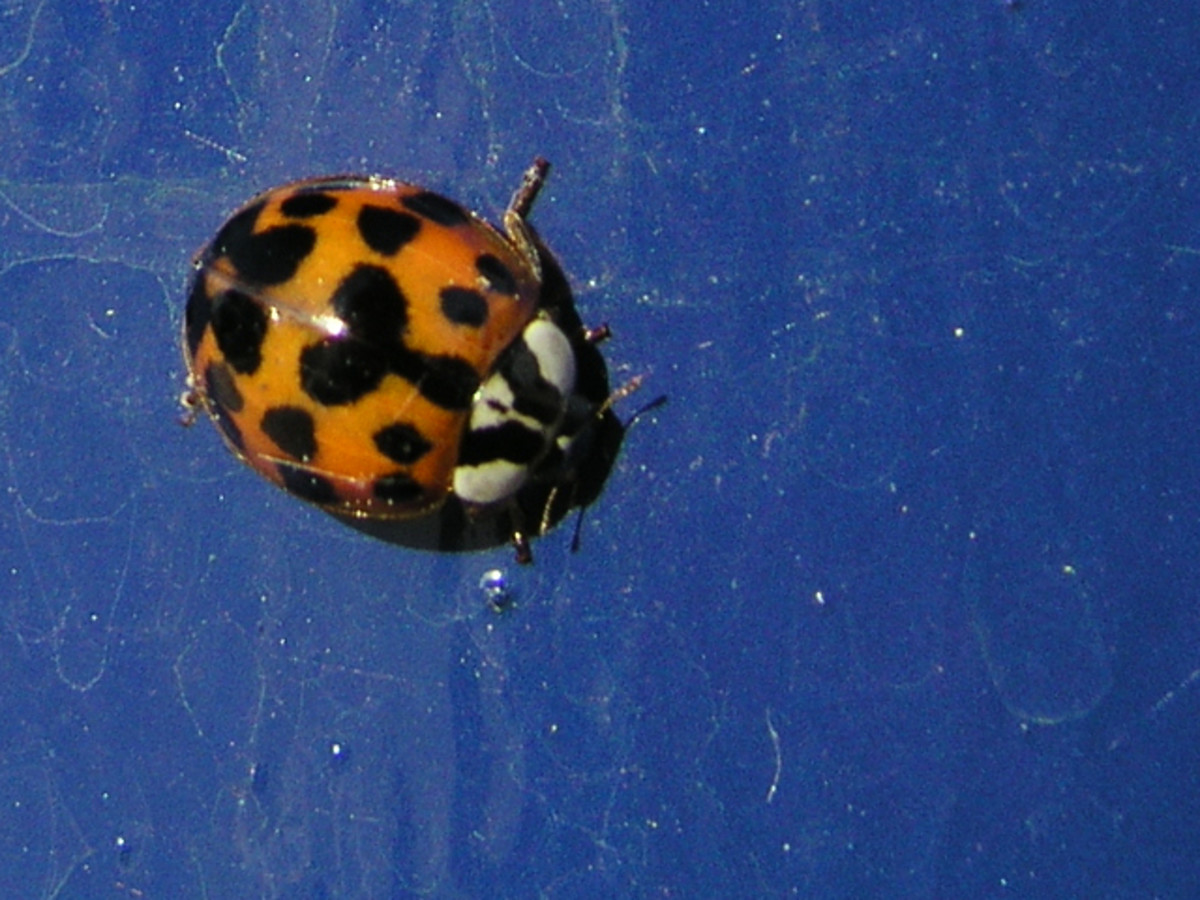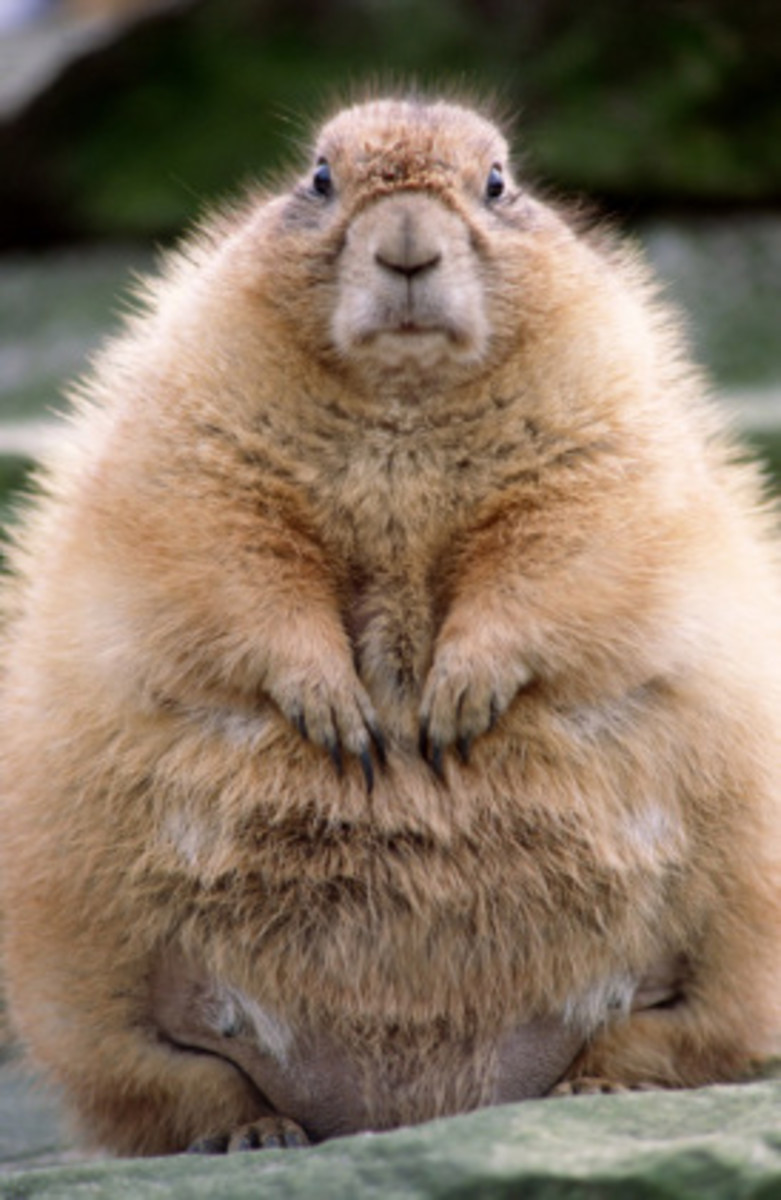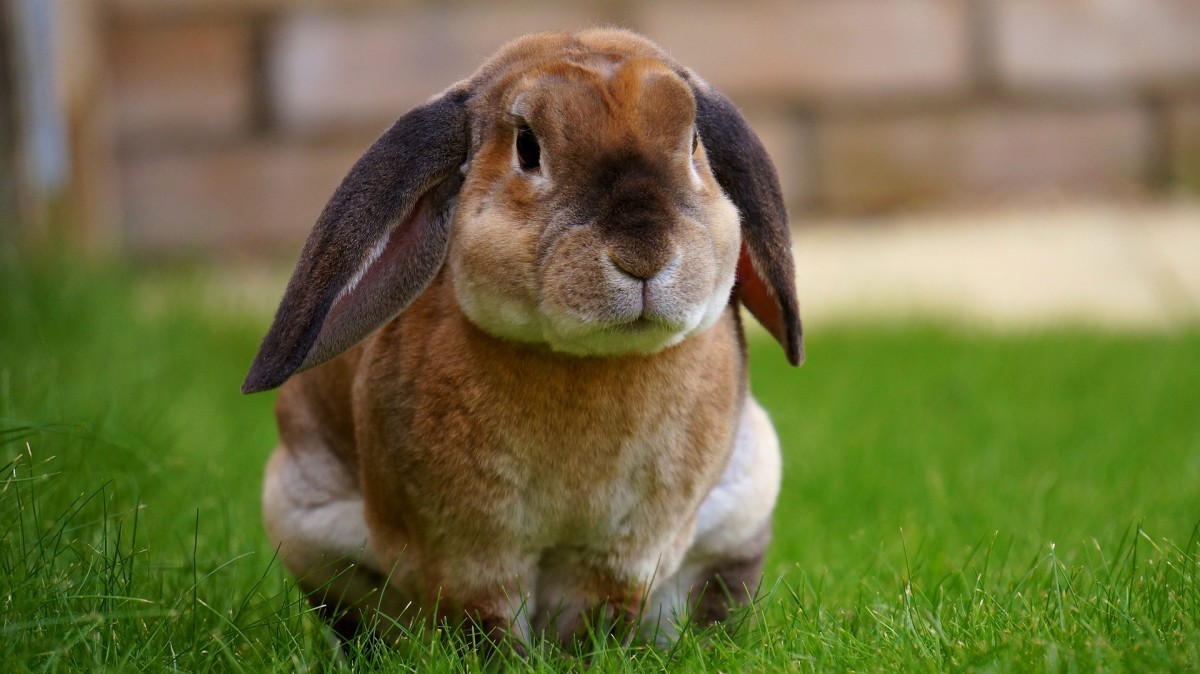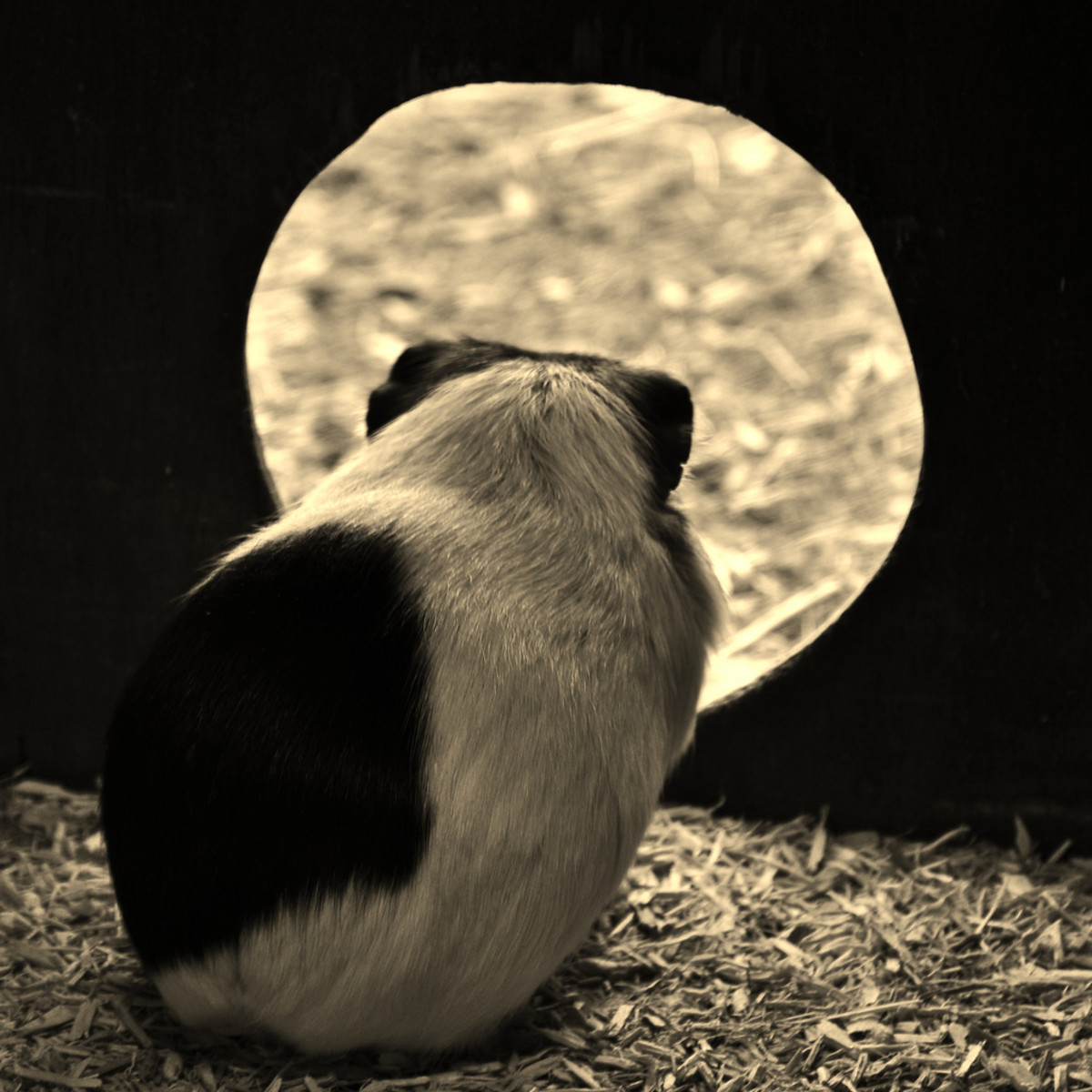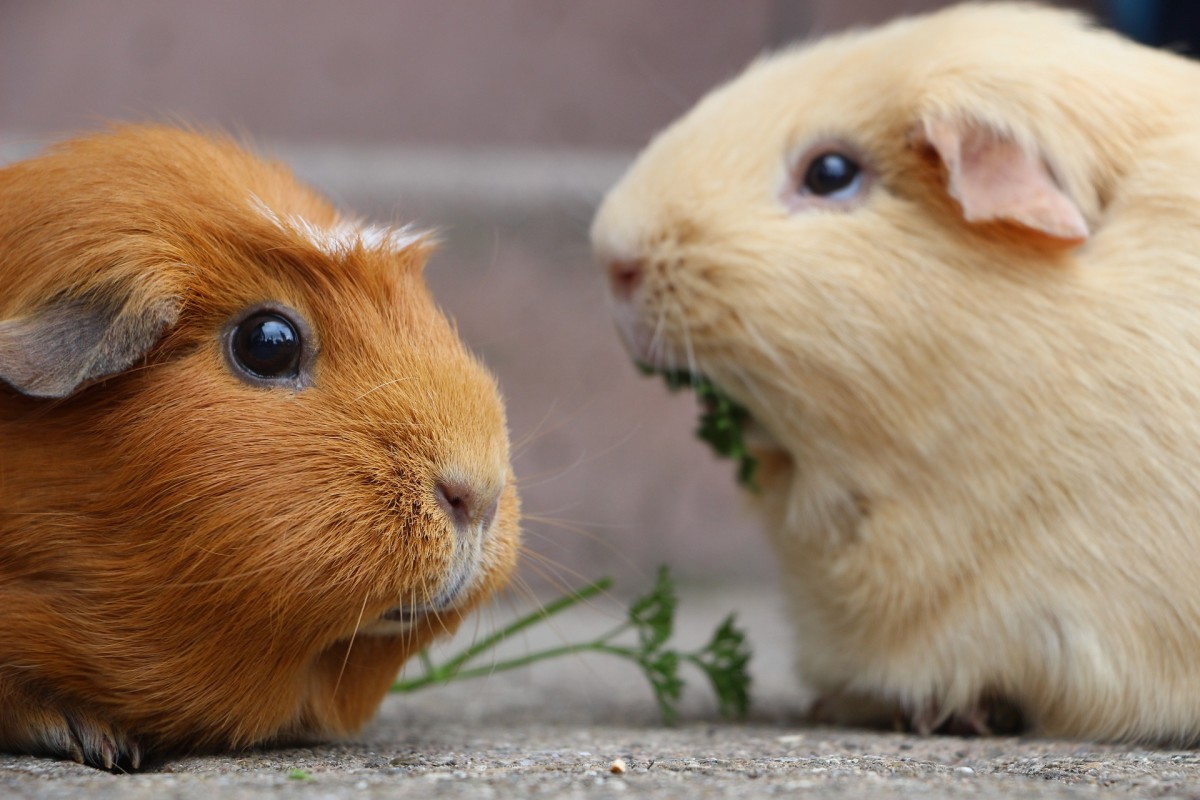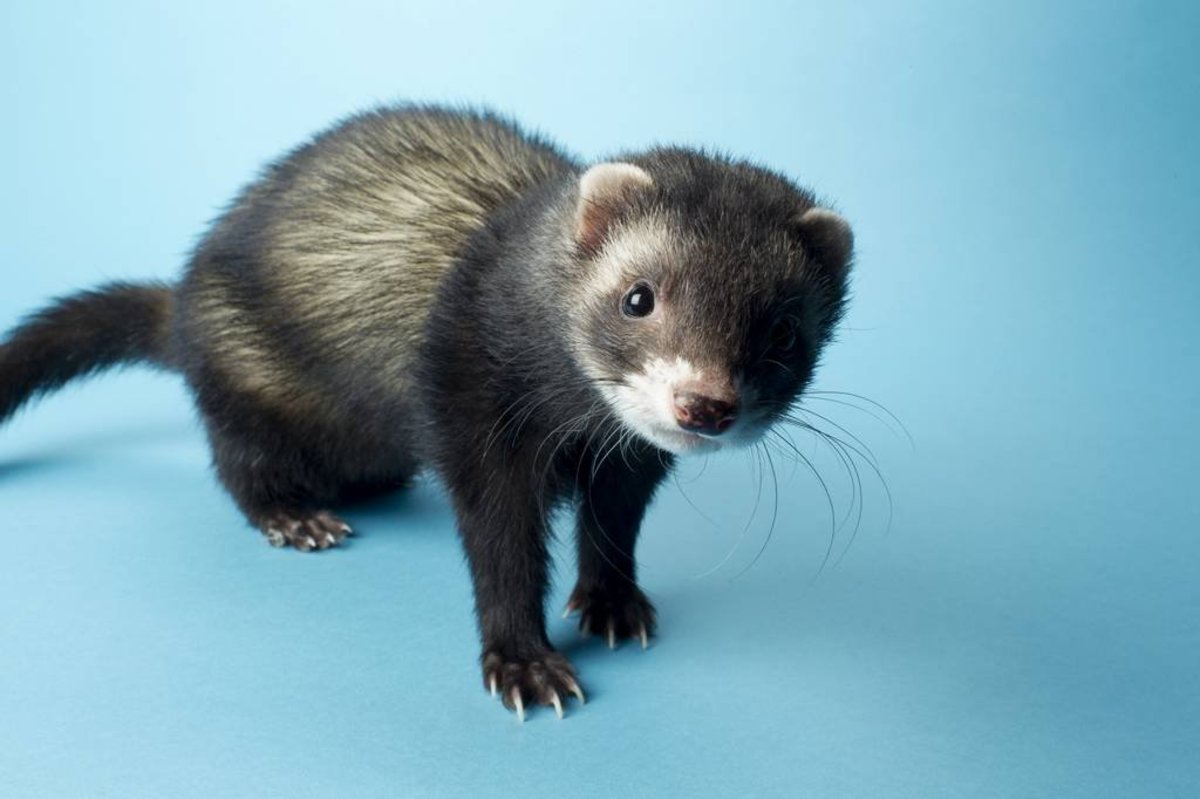Creatures of the Night
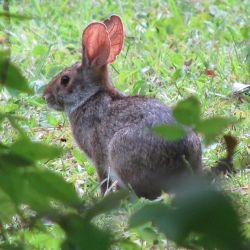
Nocturnal Animals
When the sun goes down, the night creatures come out of their nests, dens and boroughs. This is their time to shine. They have adapted to living by the light of the moon and stars, so that the cycle of life (producer, consumer and predator) will continue from dusk until dawn.
We hope you enjoy this virtual photo tour of the world of the nocturnal animals that inhabit Southeastern Louisiana. Some of the animals featured are raccoons, opossums, beavers, flying squirrels, bats, and rabbits. Suggestions about how to attract and photograph them and recommendations of some good books for additional reading are also given.
You'll also find teaching and research activities and reproducible note-taking task cards as well as poems about the some of night creatures such as rabbits (Peter Rabbit), raccoons and opossums.
Rabbit photo by Y.L. Bordelon, All Rights ReservedMoon lit Stroll
While most of us are snug in our beds, the nocturnal creatures are just waking up and are beginning to go about their daily, or should I say, nightly chores. Webster's dictionary defines nocturnal as "of, relating to, or occurring in the night and also active at night".
Many interesting and beneficial nocturnal animals make their home in and around the Tchefuncte River in Southeastern Louisiana. We have been able to photograph quite a few of the mammals as they visit one of the feeding stations where we have a wildlife camera set up. Other birds, amphibians and insects have been photographed when they venture out on cloudy days or at dawn and dusk.
We will begin our tour with a few of the warm-blooded animals and will add some of the others as we go along. So join us now for a virtual tour of the night life in the woods near the Tchefuncte River. Let's go down by the river to see some of the mammals.
How lovely are the portals of the night, When stars come out to watch the daylight die.
Thomas Cole, Twilight
Mammals by Moonlight
Louisiana is called Sportsman's Paradise for a reason. Even after Hurricane Katrina the forests hold abundant wildlife. But native habitat suitable for the larger mammals is rapidly decreasing in our area on the North Shore of Lake Pontchartrain. We still have pockets of wild land where the wildlife can survive and our property and the properties adjacent to ours form a corridor along the Tchefunte River for the wildlife. Mammals that we have been able to photograph include Beaver, Flying Squirrels, Opossum, Rabbits, Raccoons and White-tailed Deer as well as a few predators including, Red Fox, Bobcat and Coyote.
The camera that we used to take the Raccoons and Opossums in Spring photo is a Moultrie Game Spy Trail Camera. It takes color still photographs, day or night, automatically when the motion sensor is activated and color video clips during the day.
Spring Time in the Forest - Raccoons and Opossums
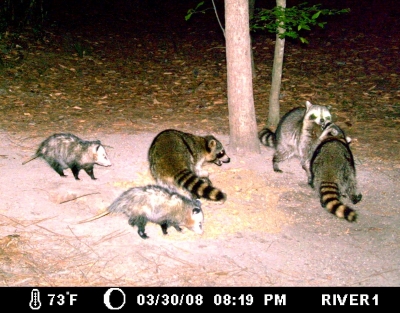
Flying Squirrels
Flying Squirrels
Southern Flying Squirrels (Glaucomys volans) are delightful little nocturnal members of the rodent family with big, bright, dark eyes and lovely soft brown fur. The flap of skin that runs from their front to back legs enables them to glide from a tall tree to lower branch, hence the name, Flying Squirrel.
The Southern Flying Squirrel is smaller than its northern cousin, measuring about 9 inches long. The Northern Flying squirrel is about 12 inches long. The ranges of the two subspecies overlap, with the Southern's range extending all the way up into Minnesota.
Flying Squirrels in Bird's Nest Box
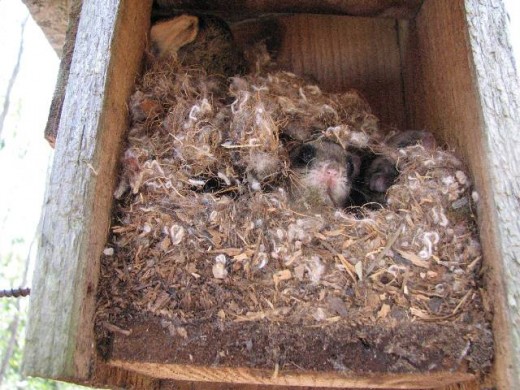
These squirrels are secondary cavity nesters, which means that they do not excavate their own nesting sites. Instead, they use existing sites like old woodpecker holes and other natural tree cavities. They will quickly take advantage of a bird nest box placed near a wooded area. Their diet is omnivorous, but they primarily eat nuts and seeds (sunflower is a favorite) and will also eat birds eggs, nestlings and carrion. Some nest box monitors have reported that they will attack and kill smaller cavity nesting birds that disturb a nest box which the squirrels are using.
Flying squirrels will reproduce twice a year, once in late winter / early spring and again in mid summer. Usually 2 blind, deaf, hairless, helpless squirrel pups are born after a 40 day gestation period. Females raise the young by themselves, with no help from the male. By the fifth week after birth, the little ones are weaned and begin to venture out of the nest.
The main threat to Flying Squirrels is another nocturnal creature, the owl, but raccoons, weasels, foxes, hawks, and snakes also pose a threat. In the wild, Flying squirrels live about 5 years.
Flying Squirrel Books and Puppet
Flying Squirrels are cool animals that make the little one's imagination run wild. Grab a Flying Squirrel bag and throw in the books and puppet and you have a theme bag full of great entertainment and learning on a long car trip or vacation. Teachers can add activities related to the theme and the bag can be "checked out" to take home for great, parent assisted learning. Make 15 or 20 on different themes so no one will be left out.
Flying Squirrel Videos
Add this video to your Flying Squirrel Theme Bag for learning and fun during a car trip or anytime.
Rabbits
Cottontail Rabbit Munching on Wild Greens
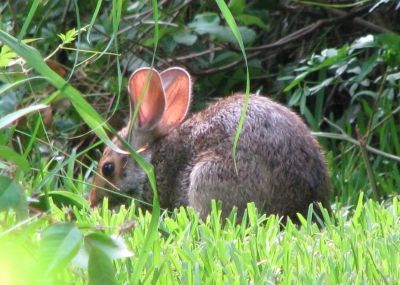
Rabbits
The Cottontail Rabbit inhabits most of Louisiana (and the United States from the Great Plains to the East Coast). We are lucky to have a little warren of them living on the edge of the woods close to our house as well as in the wild areas. We enjoy having them around, even though they used to raid our vegetable patch, but a quick and easy rabbit fence around the vegetable garden took care of that.
They enjoy munching on the many wild plants in our ground cover. They feed primarily at night from before dusk to after dawn. During the warm weather they feed on the new growth, sprouts and the leaves of plants like clover, lambs quarter, various grasses, wild peas and beans. In the fall, herbaceous plants are eaten and in winter stems, buds, low-growing shrubs and vines and tree bark are included in their diet.
Cottontails are the smallest rabbit, weighing about 3 pounds and measuring from 15.5 to 18.75 inches. Cottontails will breed 3-4 times a year, so in areas where the natural predators have been killed or removed they can become a problem. In areas where the natural cycle is intact, only 15% survive the first year. Predators in our area include large owls, hawks, foxes, coyotes and bobcats to mention a few.
Rabbit Chasing Snake Video
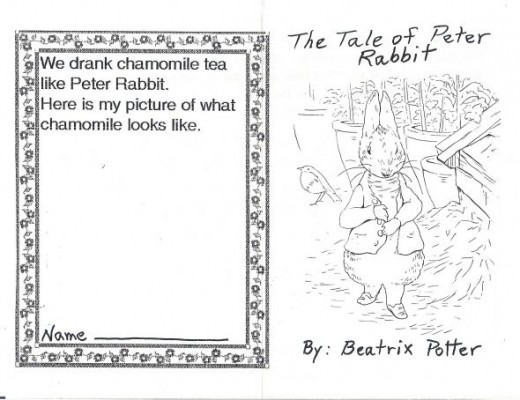
Rabbitty Activities with Peter Rabbit
There are so many interesting and enjoyable rabbit related learning activities that can be done. As a teacher/librarian, one of the favorite research units for pre-school and kindergarten (yes, we started teaching research at that age) involved center activities with a Peter Rabbit theme.
In one teacher directed center, the children used a globe or atlas and a booklet I created to learn about "tea time" in Great Britain, where Peter lived, to locate the USA and Great Britain and to trace the route that they would take to fly there. They also observed a Chamomile plant and learned about the herb and how to make Chamomile tea like Peter's Mother gave him. We made some and tasted it right there in the library. Click HERE to print out the map page of the Peter Rabbit booklet.
To print a copy of the student booklet that I created, please click HERE or on the picture of the booklet cover above and you will be transferred to Flickr.
In another center, the children used picture dictionaries to find and match the pictures in their Spring Words Booklet and then copy to word into their word books.
Many other learning activities can be correlated to the story of Peter Rabbit.
In Science, the children can study some of the plants in the story, such as Chamomile, Blackberries, Gooseberries, Cabbages, Carrots, etc. They could start seeds of some of these.
Of course the study of Rabbits is an obvious correlation and with this book and the "food chain" of producer, predator and prey.
English life and customs during the time that Beatrix Potter lived could be covered in Social Studies. There are many picture books that show the children what it was like to live so long ago and comparisons could be made between the children's life style today and those of the children during Victorian times.
All the activities I have listed can be added to the Rabbit Theme Bag for lots of take home fun.
Rabbit Tracks Note-taking Task Card
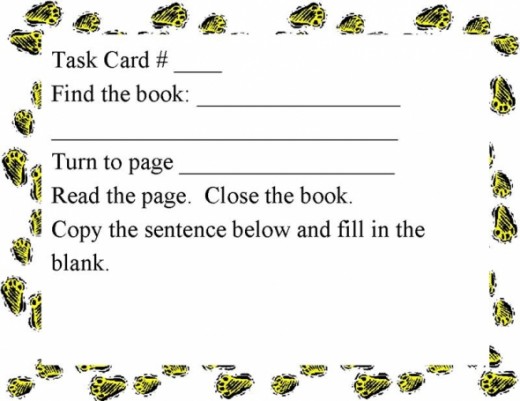
This one has a rabbit track border. The note-taking skills are on a second grade level. See more explanation on the raccoon task card.
Rabbit Story Books
You can't have rabbit story books without Max the bunny and the classic, Goodnight Moon. How's that for nocturnal? Now put them in the Bunny Bag and you have a bag full of learning fun.
Bright Eyes from Watership Down Vid
Music from Watership Down, the classic young adult story about the journey of a group of wild rabbits.
Rabbit Videos and DVD's
Many classic children's stories about rabbits, including Watership Down, the Velveteen Rabbit and Peter Rabbit are on DVD.
The Velveteen Rabbit is my favorite of all the classic rabbit stories.
Raccoons
Raccoon Pair Poster on Zazzle
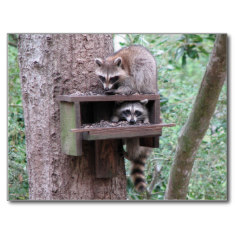
Raccoons, who look like little bandits with their black mask, clever mind and agile hand-like paws (which have gotten them into many man-made structures) are nature's Little Rascals. One Raccoon rule is, "if you feed us, we will come and bring lots of friends". In cities and suburbs, where natural predators are no longer present, this can become problematic because raccoons will quickly take advantage of a good thing. In the country, we enjoy most of their antics, but we must safeguard the nest boxes on our Bluebird trail by mounting them on 8 foot tall metal pipe poles with stovepipe predator baffles.
Because Raccoons are omnivorous, we also do not leave such delicacies as cat or dog food outside where they will find it. In the wild Raccoons eat such things as fruits, nuts, berries, insects, rodents, frogs, eggs and crayfish. The Raccoon is known for "washing its food", but it is actually just softening it up and searching for hard parts.
Little Raccoon Products on Zazzle
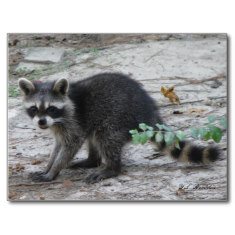
See More Raccoon Designs by naturegirl7
Raccoons mate from January through March. The gestation period is about 2 months. Litters usually contain from 4-6 young. Mothers will carry the babies around with their mouth like cats do their kittens. By 10 weeks, the kits are weaned, but begin to hunt and forage when they are about 9 weeks old. Young Raccoons can be distinguished from the adults by their darker coats. Many stay with their mothers for as long as a year.
Mama Raccoon & 3 Babies
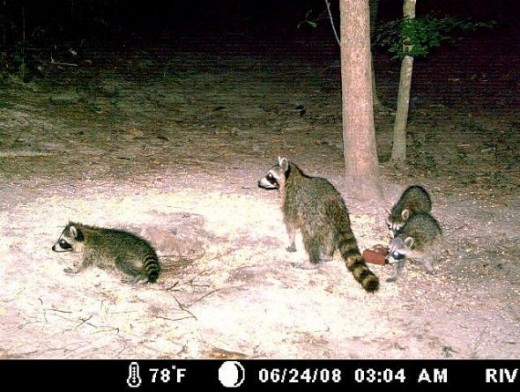
The photos show our first glimpse of Raccoon babies this year. These are probably about 9 weeks old and are just beginning to explore with their mother. They will stay with mom for several more months.
Listen to the Sounds of the Raccoon.
Mama Racoon & 3 Babies (One is Hiding)
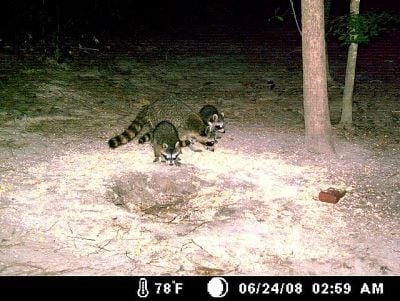
Raccoon Moon

Raccoon Story Books and puppet
Classic and new tales for read aloud time or creative play. Put the lot, including a puppet, in a Little Raccoon Bag for some on the go fun.
Rachel The Raccoon - by The Harddirt Galaxy
Some think of me as a bandit
It appears I wear a mask
But the way my face is colored
Helps greatly with my task.
Searching for food in the darkness
It takes great effort to see
And these two patches of blackness
Concentrate the light for me.
No glare nor shimmer assaults me
And my sight is crisp and clear
So I can see things more sharply
Especially those that are near.
I spend my days in the treetops
Or in the underbrush
Just keeping silent and resting
Avoiding the daytime rush.
I've always been small and skinny
Since the time my life began
That's why I've never been hunted
For food on the plate of man.
Frontiersmen at first ignored me
And I was happy for that
But later they all discovered
That I made a fine fur hat!
Raccoons: Raccoon Magic for Kids
This book would be a good one to choose for the task card activity below. It has lovely full color pictures and good easy to read information. It could be used with more advanced second graders and third and fourth grade, too.
Creatures of the Night Task Cards
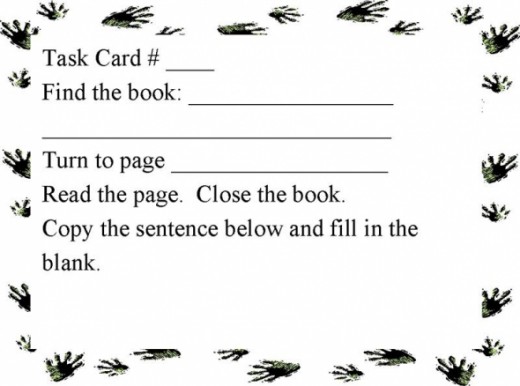
The research note-taking task card above was designed for second grade. The tracks on the border were made by Raccoons.
When using the task card, the teacher should choose 5-7 books which relate to the unit of study and are on the reading level of the child (ren).
Make copies of the task card so that there is 1 for each book. For second graders, the teacher chooses a page with 2 or 3 sentences. Then fills in the blanks with information from the book. Be sure to rephrase one of the sentences, leaving a key word blank, for the child to fill in.
Here is an example:
Task Card # _Number the task cards___
Find the book: __ Write the Title Here_______________
_____________________________
Turn to page __Put the page that you want the child to read.____
Read the page. Close the book.
Copy the sentence below and fill in the blank.
Rephrase one of the important sentences on the page, leaving a blank for a key word.
Flying Squirrel Tote Bag on Zazzle
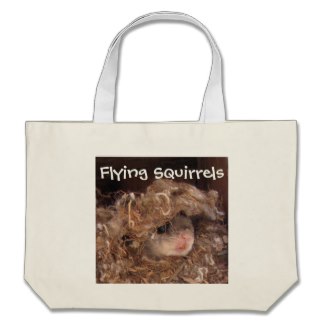
Bags for Theme Books, Videos & Stuff
The perfect bags for the Flying Squirrel, Rabbit, Raccoon and other night creatures theme things. The fun is all in the bag!
See more bag designs at Naturally Native Creations
Voices of Owls
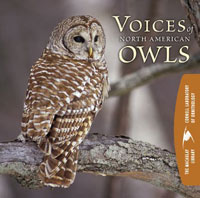
Night Creatures Bag on Zazzle
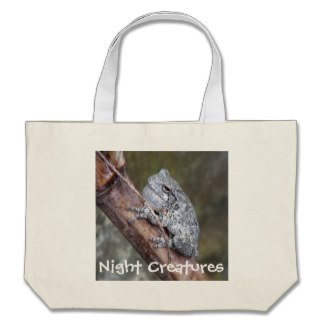
Voices of North American Owls CDs
On this 2-CD audio guide you'll hear nearly 200 tracks featuring the hoots, screams, chitters, squawks, squeals, and barks of 19 regularly occurring species of North American owls and two rarities-the most comprehensive guide to owl vocalizations.
Night Song by Leland B. Jacobs
When the sun has set
And night has come,
The insect chorus
Starts to hum.
And nothing else
Is there to hear,
but the insect voices
Soft and clear.
The insects hum
In sweet delight,
Singing their praises
Of the night.
Bambi Trailer - Twitterpated
Beavers
Beaver Activities
The Little Tchefuncte River is home to many animals. Beavers are the largest rodent species that inhabits the area in and around the river. We often see signs of their work in the form of trees and shrubs that were gnawed down and stripped of bark.
A few days after we set up a new wildlife camera with a solar battery and charger, they decided to harvest a small Magnolia tree nearby. The tree just missed the camera and solar battery when it fell, but one of the branches hit the wire. Luckily the branch was small, so no damage was done, but it was quite a job for Al to cut the top of the tree off and remove it. He left the trunk of the tree which was still partially connected to the stump. The next night the beavers came back to finish the job.
Busy Beavers & Other Night Creatures - On the Little Tchefuncte River by Y.L. Bordelon
Click thumbnail to view full-size









Beavers of the North
Opposums
Opossums
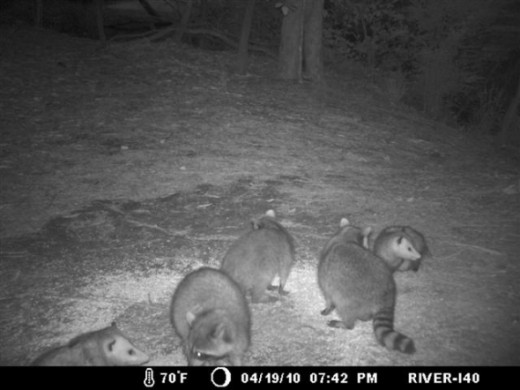
Opossums are abundant in our habitat, especially along the river. They are mostly nocturnal, but will come out in late afternoon in search of food.
Opossums are the only member of the marsupial family native to North America. Like Kangaroos, when the tiny babies come out of the birth canal, they must climb up the mother's belly to the pouch. Once they make it to the pouch, they must clamp onto the teats that give milk. If they fall, they perish.
In the picture, you can see the "baby bump" on the opossum on the right. When the babies grow too large for the pouch, they ride on the mother's back. They must hold on tight, because Mom doesn't go back to get any that fall off. Opossums lead a tough life.
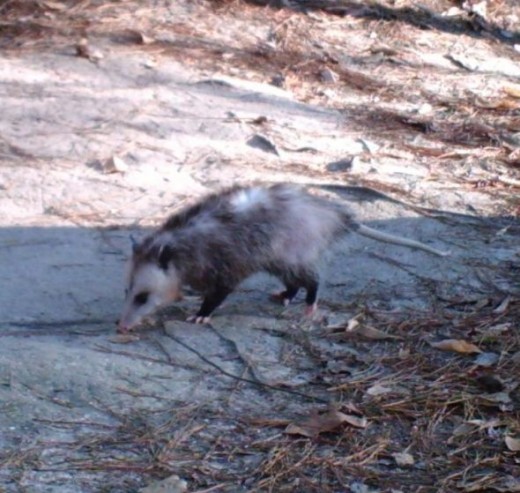
Photo by Y.L. Bordelonm, All Rights Reserved
A female opossum is using our old garden shed as a den. At dusk, we see her cautiously exit the shed, then in the morning, she slowly goes back in.
One morning, she was carrying leaves with her prehensile tail. We think that she is preparing a nest and that she is probably pregnant. I hope that I can get a picture of her when I set up the game spy camera.
Opossums are Marsupials

Opossum Tracks Note-taking Task Card
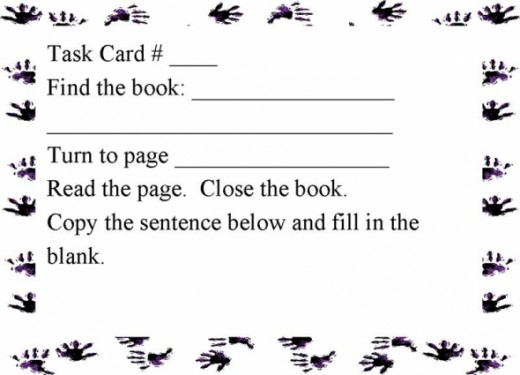
Here's another second grade research note-taking reproducible task card. See the raccoon on above for instructions.
Night Creatures - Sights, Sounds and Legends
Listen to the sounds of 60 night creatures. Color beautiful night scenes and animals.
After Dark by Frances Gorman Risser
When darkness falls in summertime,
The avenues of air
Are full of glowworm motor cops.
They're zipping everywhere.
With flashlights snapping on and off,
They signal: Left! or Right!
Directing Bugland traffic jams
On highways of the night!
National Geographic Readers: Bats
Amazing Bats - Author Unknown
Amazing bats like to eat ---
Thousands of bugs for a tasty treat.
Flying through the moonlit air ---
Traveling here and traveling there.
Hibernating when the weather's cold,
Gathered with hundreds of friends, I'm told.
Many bats are endangered, I'm sad to say ---
There are fewer and fewer bats every day.
Be kind to bats, that's the thing to do ---
Tell your friends and your family too!
© 2008 Yvonne L B
